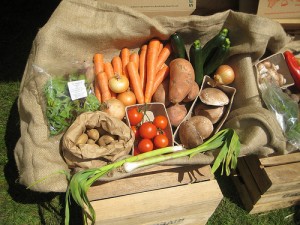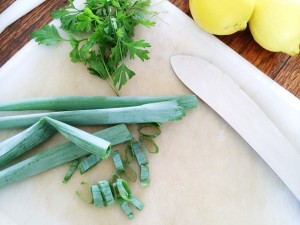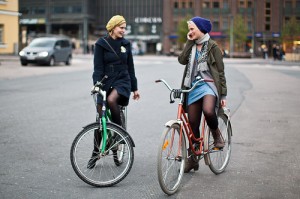More people than ever before are concerned about the environmental and social implications of our modern lifestyles. With the majority of world scientists in agreement about climate change and governments scrambling to find a way to combat the problem, it is little wonder that an increasing number of Australians are taking matters into their own hands and going green.
 So we thought we’d put together our 10 tips to help you live a more sustainable lifestyle:
So we thought we’d put together our 10 tips to help you live a more sustainable lifestyle:
1. Reduce
According to the Living Planet Report 2014, Australia’s ecological footprint is 6.25 global hectares (gha – the area of land required to sustain consumption and waste) per person. To put this into perspective, the average global footprint sits at just 2.6 gha. Reducing your footprint starts by being mindful of consumption and waste. You can also:
- Avoid single-use plastics and other disposable items
- Be wise about electricity and gas use
- Use reusable shopping bags
- Reduce amount of household waste by buying smarter, composting food scraps and recycling
2. Reuse
Australia is the second most wasteful society after the United States, with 650 kgs of waste per person sent to landfill each year. Reusing items such as glass jars and bottles helps to reduce waste. Purchase products that can be refilled such as printer cartridges and soap dispensers. Before throwing away an item, ask yourself: Can it be reused? Can it be fixed? Can it be refilled?
3. Recycle
Avoid dumping recyclable items into the trash. Paper, cardboard, some plastics and aluminium cans can all be recycled. However mobile phones can also be recycled as well as printer cartridges. Always check the label for the recycled symbol as this will give you a good indication of what can be recycled.
4. Less is more
Achieving a sustainable lifestyle means buying a bit less of everything. Before any purchase, ask yourself if you really need it. If you do need to purchase an item, search for eco-friendly and socially responsible options. If there are none available, purchase a reputable item that is well-made and built to last.
5. Choose organic
Buying organic produce (food grown without the use of fossil fuel based fertilisers) is a more sustainable way of eating. Unlike conventional farming, organic farming also focuses on the underlying health of the soil which means that biodiversity and the environment is respected.
6. Go meatless
Livestock (cattle, sheep and chicken) account for more than half of agricultural use and is the second largest source of greenhouse gases behind the energy sector. Grazing livestock also ruin the natural environment by compacting soil with their hoofs and trampling native vegetation. Eating less meat reduces our dependence on this resource-intensive industry. If you need more inspiration on going meatless, check out the Meat Free Mondays campaign.
7. Cook smart
An average Australian household uses enough energy to generate about a tonne of emissions a year; a large household generates two tonnes – just from cooking alone. Minimise energy (and greenhouse gas emissions) by using efficient cooking methods such as:
- Reusing hot water
- Putting lids on pots
- Using a fan forced oven as it is 35% more efficient than conventional ovens
- Thawing before cooking
- Reduce amount of household waste by buying smarter, composting and recycling
An even more sustainable option is not to cook, but to eat raw foods.
8. Detox your home
The average Australian home contains many fossil fuel based synthetic chemicals that is hazardous to the environment when disposed and can pose a health risk. From paints, polish, nail polish, deodorant sprays, hairsprays, cleaning products, glues, and oils, there could be at least 300 synthetic chemicals just in your home. Whenever possible, switch to natural products. Not only is it more sustainable, it is less toxic to your health.
9. Switch to renewables & re-chargeable
Get solar panels on the roof of your house. Invest in solar water heating. Go the extra cost and purchase rechargeable batters. Don’t forget to get yourself a solar powered mobile phone charger!
10. Be car independent
Transport contributes 16% of Australia’s greenhouse gases with light vehicles accounting for the largest share as Australian private car ownership is high and more people are using their cars for short trips. More sustainable options include:
- Cycling to work
- Walking to work
- Using public transport
- Carpooling with colleagues
- purchasing sustainable and efficient car such as the Prius
These may seem like small lifestyle changes but they can have a significant impact. We’d love you to share this list with your friends and family and help them jump on board Team Green. If you have any other tips we’d love to hear (read) them so make sure to leave a comment.





